Have you ever wondered what makes a garden thrive? It all starts with preparing the soil for gardening. Healthy soil is like a cozy blanket for plants. It holds nutrients and water, helping them grow strong and tall.
Imagine planting a tiny seed. You want it to bloom into a beautiful flower or delicious vegetable. But how can that happen without good soil? We often forget that soil isn’t just dirt; it’s a living thing! Each teaspoon of good soil has millions of tiny creatures that help plants.
Did you know that the way we prepare soil can change everything? A little effort can lead to a big garden surprise. So, let’s dive in and discover how to get your soil ready for gardening adventure!
Preparing Soil For Gardening: Essential Steps And Tips
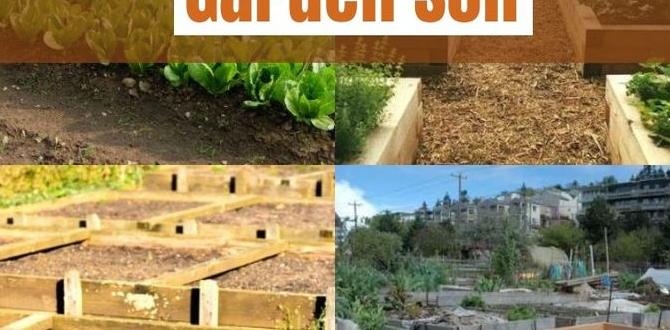
Preparing Soil for Gardening
Getting your soil ready for gardening is key to growing healthy plants. First, check your soil type. Is it sandy, clayey, or loamy? Each type needs different care. Add organic matter like compost to improve soil structure. This helps with drainage and nutrients. Did you know that earthworms are fantastic for your garden? They help aerate the soil! Mixing in proper fertilizer gives plants the food they need. With healthy soil, your garden will flourish like never before. Why not start today?Understanding Soil Composition
Explanation of soil components: sand, silt, clay, and organic matter. Importance of soil structure for plant health.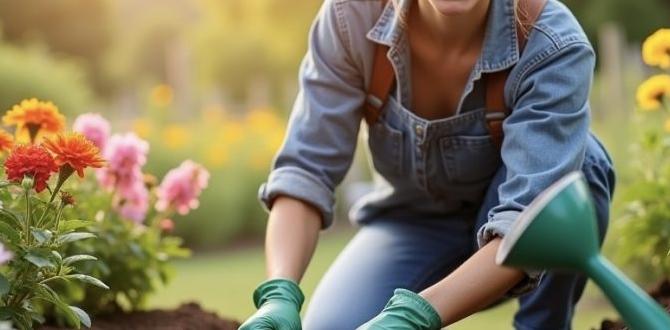
Soil is like a cookie recipe; it needs the right ingredients! There are four main components: sand, silt, clay, and organic matter. Sand is gritty and helps with drainage, while silt feels smooth and holds moisture. Clay is sticky and can be a bit stubborn, trapping water like a sponge. Finally, organic matter, which comes from dead plants and critters, feeds the soil. Good soil structure is essential for healthy plants. Think of it as the comfy bed where your plants take long naps!
| Component | Texture | Function |
|---|---|---|
| Sand | Gritty | Improves drainage |
| Silt | Smooth | Holds moisture |
| Clay | Sticky | Traps water |
| Organic Matter | Decayed material | Feeds plants |
Assessing Soil Quality
Methods for testing soil pH and nutrient levels. Indicators of healthy vs. unhealthy soil.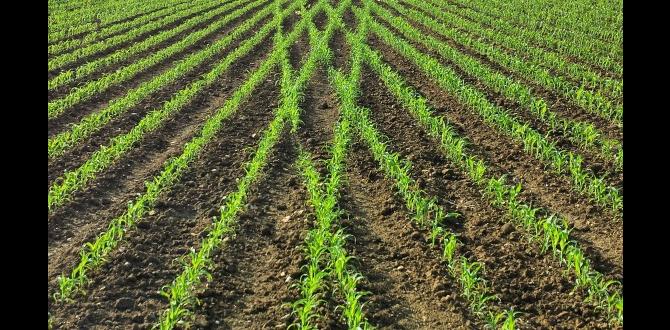
To find out if your soil is ready for planting, you need to test its quality. One fun method is using a simple pH test kit. These kits can tell you if your soil is too acidic or too alkaline. You want your soil to be around 6 to 7 on the pH scale. Next, check for nutrients. You can use home soil tests to measure key nutrients like nitrogen and phosphorus.
| Soil Type | Indicators of Health |
|---|---|
| Healthy | Dark color, crumbly texture, presence of worms |
| Unhealthy | Light color, hard texture, no worms |
An easy way to tell if your soil is happy is by checking for earthworms. If they’re doing a dance party down there, your soil is happy! Clean, healthy soil is vital for growing strong plants. Without it, even the toughest plants might give you the sad face.
Soil Preparation Techniques
Tilling vs. notill methods: pros and cons. Steps for properly tilling and aerating soil.
There are two main ways to prepare soil: tilling and no-till. Tilling breaks up soil and helps it mix. However, it can harm soil life. On the other hand, no-till keeps soil structure and protects tiny organisms. Here are some steps for tilling properly:
- Clear debris from the area.
- Loosen the soil with a tiller.
- Mix in compost for nutrients.
- Aerate to increase air flow.
Healthy soil leads to better plants, making gardening more fun!
What is the benefit of tilling soil?
Proper tilling helps break up hard soil and mixes nutrients. This supports healthier plant growth. It also improves water absorption.
Are there any downsides to no-till gardening?
Yes, no-till gardening may take longer for the soil to warm up. Weeds can also be harder to manage.
Managing Soil Moisture
Importance of drainage for healthy roots. Techniques for maintaining proper soil moisture levels.Healthy roots need good drainage. If water sticks around too long, roots can rot. That’s why keeping soil moisture balanced is key. Here are some techniques to help:
- Test your soil: Use a simple finger test to see if the soil feels dry or wet.
- Add organic matter: Compost or mulch helps soil hold the right amount of water.
- Use raised beds: They help with drainage and prevent overwatering.
Remember, plants can only grow if their roots are happy!
Why is drainage important for roots?
Good drainage prevents root rot and helps plants thrive.
How can I maintain proper soil moisture?
- Check your soil often.
- Add mulch to protect moisture.
- Water early or late in the day.
Adding Organic Matter
Benefits of organic matter for nutrient retention and soil structure. Different sources of organic matter and how to incorporate them.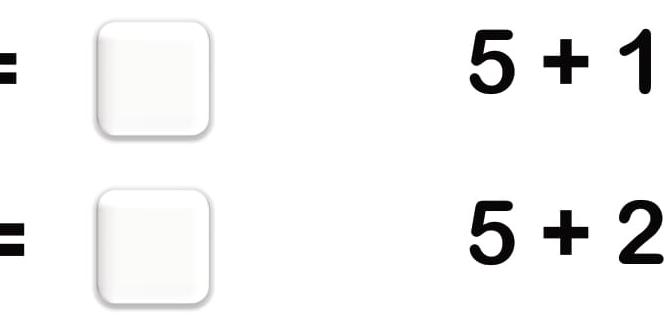
Adding organic matter to your soil is like giving it a yummy breakfast. It helps your soil hold onto nutrients better and improves its structure. This means healthier plants! You can use kitchen scraps, leaves, or compost. Mix these into your soil, and it will be dancing with joy. Here’s a quick table of sources:
| Source of Organic Matter | Benefits |
|---|---|
| Kitchen scraps | Nutritious and beneficial for soil |
| Yard waste | Adds structure and aeration |
| Compost | Rich in nutrients |
Mix it all in, and your garden will thank you. Who knew soil could be so fancy?
Preventing Soil Erosion
Causes of soil erosion in gardens. Strategies for preventing erosion, such as mulching and planting cover crops.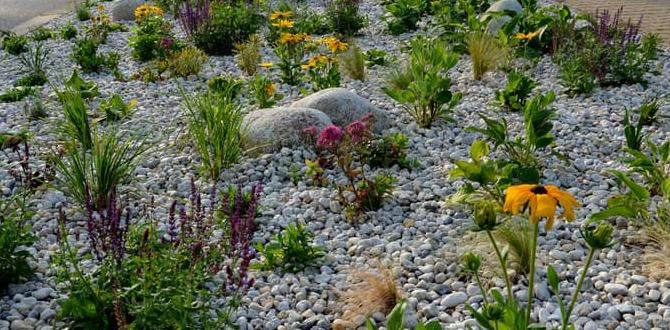
Soil erosion in your garden is like watching your favorite chocolate cake slowly disappear. It’s caused by heavy rain, wind, and even those pesky garden critters. To avoid this sad fate, you can use some fun strategies! Mulching is like giving your soil a cozy blanket. It keeps moisture in and weeds out. Planting cover crops can act as tiny superheroes, holding the soil together. These methods make your garden strong and healthy while giving erosion the boot!
| Cause of Erosion | Preventive Strategy |
|---|---|
| Heavy Rain | Use Mulching |
| Wind | Plant Cover Crops |
| Animal Activity | Build Barriers |
Maintaining Soil Health
Best practices for ongoing soil management. Importance of regular soil testing and amendments.Healthy soil is key for a thriving garden. To keep your soil in tip-top shape, follow these practices:
- Test your soil regularly. This helps you know what nutrients it needs.
- Add organic matter like compost. This boosts soil health.
- Rotate your crops. This prevents nutrient depletion.
- Use cover crops. They protect the soil from erosion.
Regular soil testing is crucial. It helps you understand soil health and ensures your plants get the right care. Healthy soil leads to healthy plants, creating a thriving garden.
Why is soil health important?
Soil health affects plant growth, water retention, and nutrient availability. Healthy soil helps plants grow stronger, resist disease, and yield more fruits and vegetables.
Common Soil Problems and Solutions
Identifying issues such as compaction, acidity, and salinity. Effective solutions to rectify common soil problems.Gardening can feel like a puzzle, especially when the soil acts stubborn. Common issues like compaction, acidity, and salinity can be tricky. Compaction happens when soil is too packed, making it hard for roots to grow. Acidity makes nutrients difficult to reach, like trying to find candy in a piñata that won’t break. Lastly, salinity can dehydrate plants, kind of like a cactus in a swimming pool! Solutions include aerating compacted soil, adding lime to reduce acidity, and flushing out salts with water. Ready to fix your soil puzzle?
| Soil Problem | Effect | Solution |
|---|---|---|
| Compaction | Troubles root growth | Aerate the soil |
| Acidity | Blocks nutrient access | Add lime |
| Salinity | Dehydrates plants | Flush with water |
Conclusion
In summary, preparing soil for gardening is essential for healthy plants. First, check your soil type. Then, mix in organic matter like compost. Don’t forget to test the pH for balance. With good soil, your garden will thrive. Now, grab your tools and start digging! For more tips, check out gardening books or online guides. Happy planting!FAQs
What Are The Essential Steps For Assessing Soil Quality Before Starting A Garden?First, we need to look at the soil color. Dark soil usually means it has good nutrients. Next, we should feel the soil. It should be crumbly, not too hard or too sticky. Then, you can check for bugs and worms since they help the soil. Finally, do a simple test to see how well the soil holds water.
How Can I Improve The Drainage And Aeration Of My Garden Soil?You can improve drainage and aeration in your garden soil by adding materials like sand or gravel. This helps water flow better. You can also mix in organic matter, like compost, to make the soil lighter. Finally, avoid compacting the soil by walking on it too much. These steps will help your plants grow strong!
What Types Of Organic Matter Can Be Added To Enrich The Soil For Vegetable Gardening?You can add lots of organic matter to make the soil healthy for your vegetable garden. Things like compost, which is made from kitchen scraps and yard waste, help a lot. You can also use shredded leaves and grass clippings. Manure from cows or chickens is another great option. All these help plants grow better and make the soil alive!
How Do I Determine The Ph Level Of My Soil, And What Amendments Can I Use To Adjust It?To find out the pH level of your soil, you can buy a soil test kit from a store. Follow the instructions to mix soil and water, then check the color to see how acidic or basic it is. If your soil is too acidic (low pH), you can add lime. If it’s too basic (high pH), you can use sulfur. Always remember to check the pH again after adding amendments!
What Is The Importance Of Soil Testing, And How Often Should I Test My Soil For Nutrient Levels?Soil testing is important because it helps you understand what your soil needs to grow healthy plants. It tells you if your soil has enough nutrients, like nitrogen, phosphorus, and potassium. You should test your soil every one to three years. This way, you can make sure your plants get the right food to be strong and happy!






